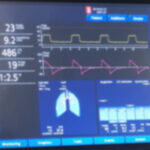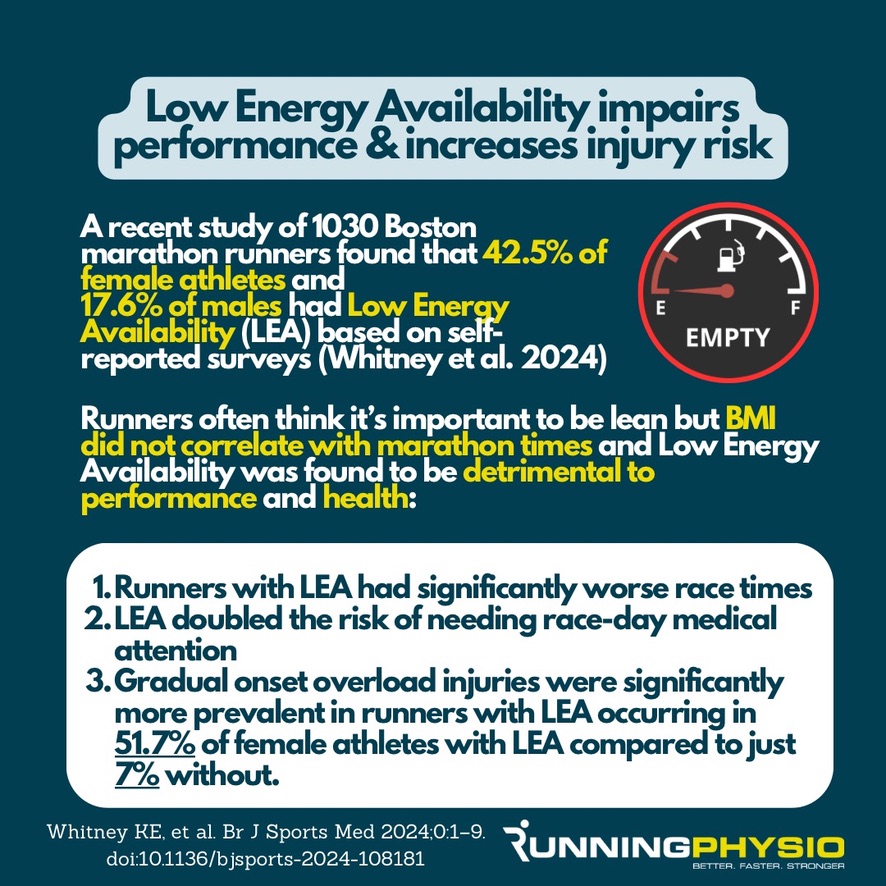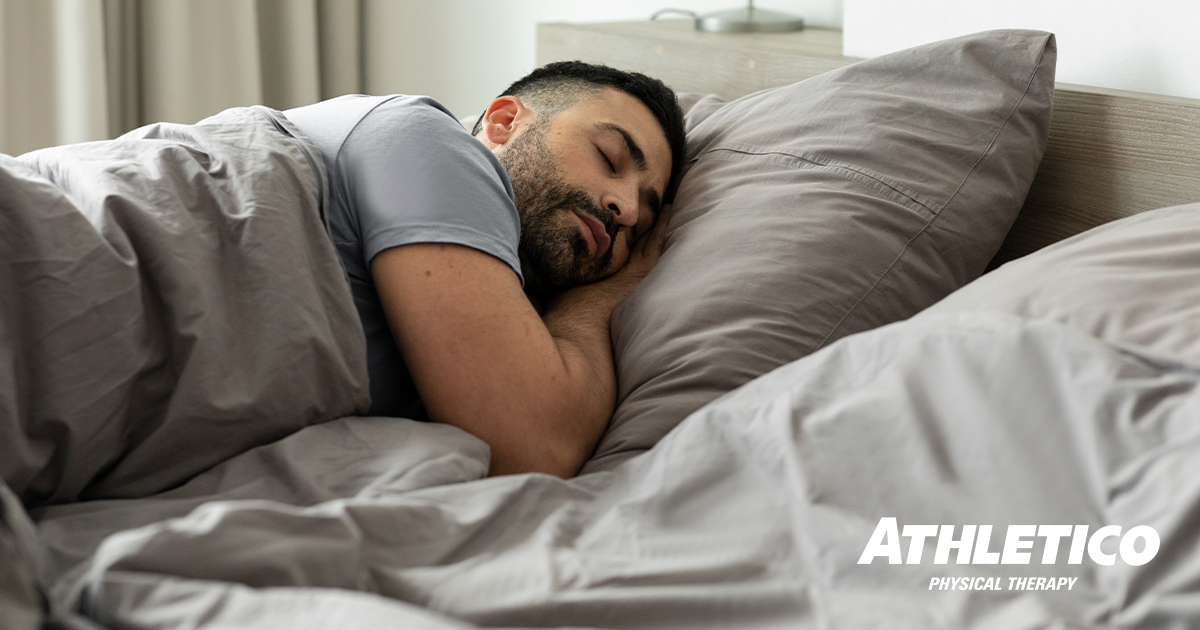Our articles are not designed to replace medical advice. If you have an injury we recommend seeing a qualified health professional. For more information please see our Terms and Conditions.
I have a question for you.
What percentage of female runners do you think have Low Energy Availability (LEA)?
5%? Maybe 10?
Perhaps you’re thinking higher, 20 – 25%?
A new study suggests you might still be some way off! Whitney et al. (2024) assessed 1030 Boston marathon runners using self-reported surveys to assess for LEA.
In their study, 42.5% of female runners were classed as having Low Energy Availability!
If you’re not familiar with LEA it results from an athlete not consuming enough energy from their diet to meet the demands of daily life and sport. It can have negative effects on multiple areas of health and performance as highlighted in the study summary below:

This is such an important paper and I’d encourage you to discuss it with athletes in your care. It’s the largest study of its kind ever conducted at a real-world marathon event and the first to demonstrate a link between nutritional “under-fuelling” and slower race performance times as well as increased risk of requiring race-day medical attention.
There’s a lot to take from this research so I’d encourage you to read the full paper, it’s open access in BJSM and available via this link.
The population included in this study is a nice representation of marathon runners you’re likely to see in clinic. The study group was 53% female and 47% male, approximately 75% were Boston Qualifiers and 25% charity team registrants.
We know multiple factors can influence race day performance but it does seem that energy availability was key:
It’s essential that as health professionals we’re aware of Low Energy Availability and the impact it can have on health and performance. It’s a key driver of RED-S and can be associated with eating disorders and exercise addiction so it’s essential that athletes have the support they need, potentially including a Mental Health Professional and referral to a Sports Physician.
I’ve chatted with Dr Whitney via social media and she’s very kindly shared some great information on signs of LEA to look out for in athletes:

I asked Dr Whitney about the next steps and she highlighted how important it is to arrange a consultation with a Registered Dietician who specialises in sports performance as the energy and nutrition needs of each athlete are complex and highly variable. Alongside this Dr Whitney shared some general advice that can be helpful for athletes:

I love this clear, simple message from Dr Whitney and her research, “Fuelling is faster!”
I think we should be spreading this far and wide to health professionals, coaches and athletes. So many things with runners become part of the ritual of their sport, from owning far too many pairs of running shoes to warming up and starting your GPS watch. It’s all part of running and nutrition should be the same, part of that ritual. It can be a very enjoyable part too!
I encourage runners to have a post-run recovery and fuelling strategy that they can look forward to, it helps them through the long runs, especially if it’s cold and wet! For me it was a hot chocolate, fruit, some nice snacks and a soak in the bath. That became a key part of my ritual and something I cherished.
I’d like to say a huge thank you to Dr Kristin Whitney for her research and sharing her wisdom and also to her co-author Dr Alexandra F. Dejong Lempke who has also been a big help with bringing this information together. You can follow them both on Instagram: @Kristinwhitney.md and @afdlempke3











